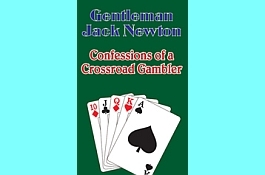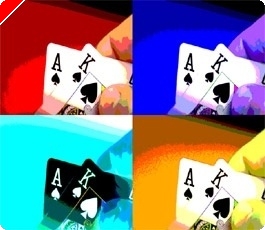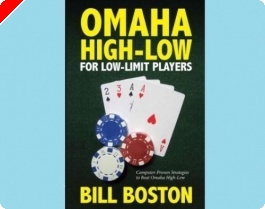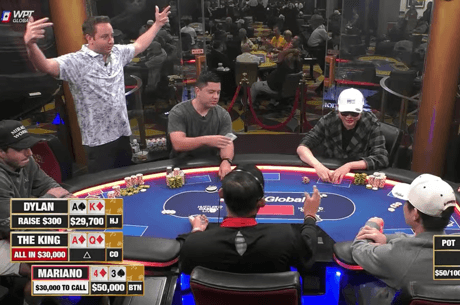Poker & Pop Culture: Herbert O. Yardley’s ‘The Education of a Poker Player’

There was a time, prior to the era ushered in by books like Super/System, Caro’s Book of Poker Tells, and The Theory of Poker, when poker’s place in popular culture was so marginal that an entire book devoted to poker strategy was hardly the stuff of popular demand. Unlike bridge, chess, or other games, poker was viewed by the cultural mainstream not so much as a skill-based test of players’ intellectual ability and psychological fortitude, but as just another form of gambling, only distinguished from other casino games like roulette or craps by the fact that one was perhaps even more likely to be cheated while playing it. Serious poker players interested in improving their games learned the game by spending time at the tables, or by finding mentors to help guide them through the game’s various nuances.
However, in late 1957 there appeared a book that for an entire generation of poker players would serve as an invaluable introduction to poker strategy, Herbert O. Yardley’s thin but influential volume The Education of a Poker Player. A bestseller in its time, for many poker players over the next couple of decades it would remain the only poker strategy book they’d ever heard of, let alone read.
The Education of a Poker Player was not Yardley’s first book, nor did it represent his introduction to American popular culture. In fact, the book was published near the end of Yardley’s colorful life, well after his days as the United States’ foremost code breaker during and after the first World War. In 1931, Yardley had published The American Black Chamber, thereby communicating to the world details of his role as the founder and head of MI-8, a cryptanalytic organization started by the U.S. shortly after WWI and ultimately dissolved following the stock market crash of 1929. MI-8, also known as the “Black Chamber,” is often compared to today’s National Security Agency (NSA).
The American Black Chamber was a huge seller for Yardley, though brought with it controversy as it told many secrets the U.S. government did not especially want publicized. In fact, the U.S. government considered pursuing legal claims against Yardley for the book’s publication, though ultimately did not. The government did, however, subsequently pass laws regarding the publication of governmental records that prevented Yardley from publishing a second book about his time with MI-8.
His services no longer wanted by the U.S. government, Yardley would later work for both Canada and China as a code breaker before retiring in the 1950s. He began work on The Education of a Poker Player late in life, and indeed the book would appear just a few months before his death at age 69. The book is both a poker strategy guide and an autobiography, starting with Yardley’s life as a teenager growing up in Worthington, Indiana, then moving on to his adventures cracking Japanese codes in China with MI-8, all the while passing along specific advice about various forms of poker.
The book is in three parts. The first two parts are both titled “Three Poker Stories,” and both feature Yardley weaving various poker lessons into his autobiographical tales. Part One concentrates on Yardley’s younger days learning how to play poker in Indiana saloons. The narrative primarily focuses on time Yardley spent at a saloon called Monty’s Place. According to Yardley, he preferred Monty’s “because it offered more color and action.” Also, not insignificantly, of the several saloons where Yardley played poker, “Monty’s Place was the only clean one.”
“Monty” refers to a man named James Montgomery, shown teaching young Yardley how to play variations of five-card draw (jacks or better), five-card stud, and five-card draw (deuces wild with the joker). Some have suggested the Monty presented in The Education of a Poker Player is in fact a compilation of various people Yardley knew, although the author himself insisted he was an actual person. Among Monty’s game-specific advice come other, more general pointers about hand reading, tells, and other psychological issues specific to poker.
The second part of the book presents an older Yardley working as a code breaker in China. Here, Yardley takes on the role of the mentor figure tutoring his interpreter in five-card draw (lowball), seven-card stud, and seven-card stud hi-lo. As in the first part, the chapters (save one) all contain summaries describing highly-detailed hand examples designed to communicate further the strategic concepts being advanced. A third part then offers brief treatments of other, even more obscure stud and draw games such as Doctor Pepper, Baseball, and Spit-in-the-Ocean.
Overall, Yardley invariably follows a “tight is right” mindset that recommends caution and patience. In The Biggest Game in Town, Al Alvarez summarized Yardley’s poker philosophy as follows: “Assume the worst, believe no one, and make your move only when you are certain that you are unbeatable or have, at worst, exceptionally good odds in your favor.” While the games on which Yardley concentrates are either no longer played or are much less popular today than hold’em or Omaha, much of the general advice he offers still rings true today. And the stories of life in the saloons or cracking codes remain quite compelling.
Perhaps indicating the public’s readiness for a genuine poker strategy guide, as well as its taste for the somewhat exotic (and perhaps embellished) tales of international intrigue from a famous American code breaker, the book was an enormous commercial success. James McManus wrote that when an excerpt from The Education of a Poker Player appeared in the November 9, 1957 issue of The Saturday Evening Post, that “issue broke the newsstand record by selling 5.6 million copies.” Speculated McManus, “the Post’s vast middle-class readership was apparently hungry for lessons in tough, honest poker.”
While other poker books would be written and published over the next couple of decades, Yardley’s book was the one most players were likely to have read during that period, if they read any poker books at all. Lou Krieger, himself an author of 11 books about poker and gambling including Poker for Dummies, has singled out Yardley’s book as the first poker book he’d ever encountered, and the only one of note until the late 1970s when Super/System and other works began to emerge.
The book’s importance in the history of poker literature, then, is unquestioned. In terms of larger cultural significance, however, The Education of a Poker Player is meaningful for at least a couple of reasons.
For one, the book signals an early, important moment in the culture beginning to recognize poker as a legitimate skill-based endeavor, with its status as a bestseller standing as a kind of endorsement of poker as a subject worthy of study. Additionally, for all of the book’s intrigue, the focus throughout is on how to beat fairly-played games, thus presenting poker as not only a legitimate test of skill, but a game that is not necessarily overrun by cheaters. As McManus put it, “Herb Yardley helped usher in the age of square poker.”
The fact is, one could find a clean game, such as Yardley did at Monty’s Place. And when one did, it was in one’s best interest to learn how best to beat that game.
If you're looking for some online poker action then you should get your PokerStars marketing code from PokerNews.com - The #1 poker source online.








